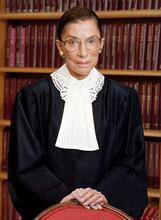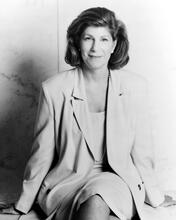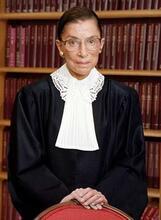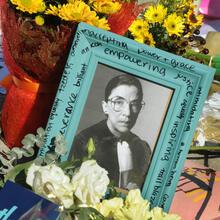Elena Kagan
Appointed by President Barack Obama in 2010, Elana Kagan became the second Jewish woman to serve as an Associate Justice of the United States Supreme Court. She joined the court after a distinguished government and academic career. While she has maintained a low profile on the Court, she has chosen to speak through her incisive opinions and her pointed questioning during oral argument. With a clear and accessible writing style, she has author significant majority opinions. In a court with a conservative bent after President Donald Trump’s nomination of three justices, many court watchers saw Kagan as evolving into one of the most influential of the liberal judges, and she has increasingly authored stinging dissents, focusing more and more on the majority’s apparent assault on judicial precedent.
Overview
Elena Kagan was appointed to the United States Supreme Court on August 7, 2010, by President Barack Obama, after a distinguished government and academic career. That background, at least in recent years, is unusual for the Supreme Court. As of 2021, Kagan was the only justice serving who had not been a judge before becoming a member of the Supreme Court. In the 1990s, she worked in President Bill Clinton’s White House as a policy advisor and then as special counsel on the Senate Judiciary Committee. When not in government Kagan was a professor, first at the University of Chicago and then at Harvard. She capped off her academic career by serving as dean of the Harvard Law School between 2003 and 2009; she then served as Solicitor General in the Obama administration, the first woman to do so. As solicitor general, her first oral argument was a daunting one, Citizens United v. Federal Election Commission. She lost, the Court ruling 5-4 that corporations, acting independently, can spend unlimited amounts on elections.
Family, Education, and Jewish Identity
Born on April 28, 1960, Kagan was raised on the Upper West Side of New York to Jewish parents. Today she observes the High Holidays at the same synagogue Justice Ruth Bader Ginsburg attended. During her confirmation hearings in 2010, Senator Lindsey Graham queried her about the “Christmas Day underwear bomber,” a defendant who had a concealed plastic explosive in his underwear, set to detonate during a December 25, 2009, flight. In passing, Senator Graham asked her where she had been on Christmas and she quipped, “Like all Jews, I was probably at a Chinese restaurant” (Talbot).
When Kagan was twelve, she asked her rabbi if she could have a Lit. "son of the commandment." A boy who has reached legal-religious maturity and is now obligated to fulfill the commandmentsbar mitzvah like the boys—that it be held on Saturday morning, that she recite a Haftorah portion. No Lit. "daughter of the commandment." A girl who has reached legal-religious maturity and is now obligated to fulfill the commandmentsbat mitzvah had ever before been performed at the Lincoln Square Synagogue, the Modern Orthodox congregation to which her family belonged. The result was a compromise—a bat mitzvah but on Friday night and she would have to read from the Book of Ruth rather than from the Torah scroll—a compromise that perhaps forecast Kagan’s later political and judicial diplomatic skills.
Kagan’s family reflected the commitments that her career would mirror. Her father Robert was a lawyer who served on the local community board and represented tenants in disputes with landlords. Her mother Gloria taught at Hunter College Elementary school, a selective public school in Manhattan. Kagan attended Hunter College High School, graduating in 1977. She went next to Princeton, where she became an editor of The Princetonian and graduated summa cum laude in 1981. She earned a master’s in philosophy from Worcester College, in Oxford, England, after which she attended Harvard Law School, graduating magna cum laude in 1986. She clerked for Judge Abner Mikva of the D.C. Circuit Court of Appeals and then Justice Thurgood Marshall, who called her “Shorty” (Savage).
Influence on the Supreme Court
Unlike Justices Sonia Sotomayor or Ruth Bader Ginsburg, the other women with whom she has served on the Supreme Court, Kagan has maintained a low profile on the Court. She is not a meme or an icon, as was Justice Ginsburg. She has not written biographies or appeared on television, as has Justice Sotomayor. In effect, she has chosen to speak through her incisive opinions and her pointed questioning during oral argument.
In a court with a conservative bent after President Donald Trump’s nomination of three justices, many court watchers see Kagan as evolving into one of the most influential of the liberal judges. Legal reporter Margaret Talbot attributes Kagan’s influence to her “temperament as a bridge builder” the fact that she has more acute political instincts than some of her colleagues, and her status as youngest of the liberal wing. In 2010, when Kagan was nominated, she was widely touted not only because of her intellectual and analytical prowess, but also because supporters predicted she would be able to find consensus even in a deeply divided court. “It’s an incredibly important thing for the court to guard this reputation of being fair, of being impartial, of being neutral and of not being simply an extension of the terribly polarized political process and environment that we live in,” Kagan herself commented (quoted in Wolf). To find common ground and diminish the reach of conservative opinions, she has sought to frame the legal question raised by each case as narrowly as possible.
Kagan has authored significant majority opinions, such as her landmark opinion in Miller v. Alabama. Miller was a 5-4 decision, holding that mandatory life imprisonment without parole for defendants convicted of murder who were under age eighteen at the time of their crimes violated the Eighth Amendment to the United States Constitution. Drawing in part on adolescent neurodevelopment studies, Kagan wrote: “Mandatory life without parole for a juvenile precludes consideration of his chronological age and its hallmark features—among them, immaturity, impetuosity, and failure to appreciate risks and consequences. It prevents taking into account the family and home environment that surrounds him—and from which he cannot usually extricate himself – no matter how brutal or dysfunctional.” The decision resonated across the country; 29 states saw their mandatory sentencing statutes invalidated. Juveniles who had been sentenced under the mandatory regimes were resentenced. Its rationale—legitimizing a different view of juvenile offenders grounded in science—led to changes in state policy-making in other areas, particularly the practice of trying juvenile offenders in adult courts.
Accessible Style
Kagan’s writing is clear and accessible to the lay reader, sprinkled with common sense analogies, and even Yiddish. In Arizona Free Enterprise Club v. Bennett, she noted in her dissent: “So [Petitioners] are making a novel argument: that Arizona violated their First Amendment rights by disbursing funds to other speakers even though they could have received (but chose to spurn) the same financial assistance. Some people might call that chutzpah.” At least one opinion was downright whimsical. Kimble v. Marvel Entertainment was an otherwise dry patent case. Kimble had a patent on a toy that allows children (and, Justice Kagan added, “young-at-heart adults”) to role-play as “as a spider person” by shooting pressurized foam string from the hand, which looked like webs. Her decision was replete with references to superpowers: she commented that “patents endow their holders with certain superpowers, but only for a limited time”; she referred to a “superpowered form of stare decisis [respect for precedent],” and she ended with a quote from Spiderman, “[I]n this world, with greater power there must also come—great responsibility.” (She is reportedly a comic book fan.)
Writing for the Court majority in Descamps v. United States, to reverse a sentence based on an incorrect reading of the relevant statute, Kagan noted that the lower court was wrong in viewing the crime “as containing an infinite number of sub-crimes corresponding to ‘all the possible ways an individual can commit’ it.” To illustrate, she added an analogy from the game of Clue in this parenthetical” “(Think: Professor Plum, in the ballroom, with the candlestick? Colonel Mustard, in the conservatory, with the rope, on a snowy day, to cover up his affair with Mrs. Peacock?).”
Increasingly Stinging Dissents
But after the Supreme Court was transformed with the deaths of Justices Antonin Scalia and Ruth Bader Ginsburg in 2016 and 2020 and the retirement of Justice Anthony Kennedy in 2018, Kagan has authored stinging dissents. She dissented in Rucho v. Common Cause, a 5-4 decision that barred federal courts from hearing partisan gerrymandering claims. She delivered that dissent not simply in writing but also orally. Her voice filled with fury and then sorrow, she declared that the majority was “throwing up its hands” and insisting that nothing could be done about the redrawing of voting districts, even when the results were “anti-democratic in the most profound sense.” She closed with, “With respect, but deep sadness, I dissent.”
Likewise, Kagan dissented in Town of Greece v. Galloway, in which a 5-4 majority found that New York may permit volunteer chaplains to open town council meetings with a prayer. The plaintiffs, a Jew and an atheist, argued that the prayers violated the Constitution’s Establishment clause. The majority rejected the argument, finding that the prayers were consistent with the tradition of Congress and state legislatures, the town did not discriminate against minority faiths in determining who may offer a prayer, and the prayer did not coerce the participation of members of other faiths. Kagan argued that this setting was different from Congress and state legislatures. In the intimate setting of local government meetings, in which a town council acts not only as a legislature but also as a site where local government interacts with residents, and in which Christian prayer-givers overwhelmingly delivered the prayer, the opening prayer was constitutionally flawed. "When the citizens of this country approach their government, they do so only as Americans, not as members of one faith or another," Kagan said. "And that means that even in a partly legislative body, they should not confront government-sponsored worship that divides them along religious lines."
Kagan dissented in another case involving religion exercise, Tandon v. Newson, in which the Supreme Court barred California’s Covid-based restrictions on in-home gatherings to members of no more than three different households. The plaintiffs, who held Bible studies and prayer meetings in their home, claimed that the restrictions interfered with their First Amendment right to the free exercise of their religion. The trial court and the appellate court had sided with California, relying on longstanding Supreme Court precedent that secular laws that are applicable to everyone are not unconstitutional just because they may burden religious exercise. Five members of the Supreme Court, however, in an unsigned order, held the restriction unconstitutional. Kagan was characteristically direct: she accused the majority of disregarding law and facts, ignoring the uncontested testimony of California’s public health expert just because it is “inconvenient” for the majority’s preferred result.
One of Kagan’s most pointed dissents was in Abood v Detroit Board of Education, in which the Court held that public employee unions cannot collect fees from nonmembers to defray the costs of collective bargaining. Kagan accused the court of "weaponizing the First Amendment in a way that unleashes judges, now and in the future, to intervene in economic and regulatory policy." Going forward, “[p]ublic employee unions will lose a secure source of financial support. State and local governments that thought fair-share provisions furthered their interests will need to find new ways of managing their workforces."
With the addition of Justices Neil Gorsuch, Brett Kavanaugh, and Amy Coney Barrett to the court, Kagan’s dissents focused more and more on the majority’s apparent assault on judicial precedent. In a 2019 decision, Knick v. Township of Scott, the court held that a property owner can sue the government to claim that the government’s actions were an unconstitutional taking, which the property owner can take directly to federal court rather than first litigating in state court, as decades of precedent had required. Kagan claimed that with that decision, the majority “smashes a hundred-plus years of legal rules to smithereens.” She was predicting—or warning—of the new majority’s efforts to dismiss precedent in other areas, presumably including abortion. She said: “But maybe the majority should take the hint. When a theory requires declaring precedent after precedent after precedent wrong, that’s a sign the theory itself may be wrong. The majority’s theory is just that.” She cited Justice Stephen Breyer’s dissent only the month before when he said: “Today’s decision can only cause one to wonder which cases the Court will overrule next.” To which Kagan responded caustically, “Well that didn’t take long. Now one may wonder yet again. “
While Kagan has surely worked to be a “bridge builder,” advocating for narrow decisions and arguably less predictable in the positions that she takes than her peers, there are limits—clear limits. And when she reaches those limits, in clear and unmistakable prose, she dissents.
Gertner, Nancy. “Miller v. Alabama: What It Is, What it May Be, What It is Not.” 78 Missouri Law Review 1041 (2013).
“Justice Elena Kagan, A Conversation with Associate Justice Elena Kagan.” 91 U. Colo. L. Rev. 749 (2020)
Ray, Laura Krugman. “The Hindrance of a Law Degree: Justice Kagan on Law and Experience.” 74 Md. L. Rev. Endnotes 10 (2015).
Savage, Charlie. “Kagan’s Link to Marshall Cuts 2 Ways.” New York Times, May 12, 2010.
Talbot, Margaret. “Is the Supreme Court’s Fate in Elena Kagan’s Hands?” New Yorker, November 11, 2019.
Wolf, Richard. “Associate Justice Elena Kagan, after decade on bench, emerges as Supreme Court ‘bridge builder.” USA Today, August 4, 2020.
Mauro, Tony. “The Supreme Court Sotomayor and Kagan.” 97 Judicature 57 (2013).








